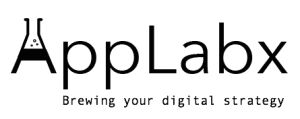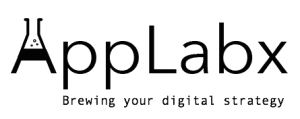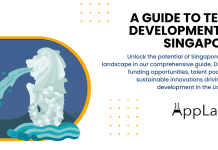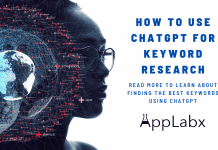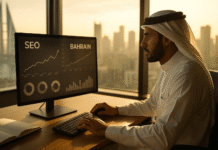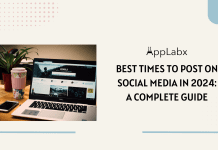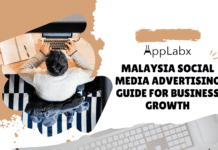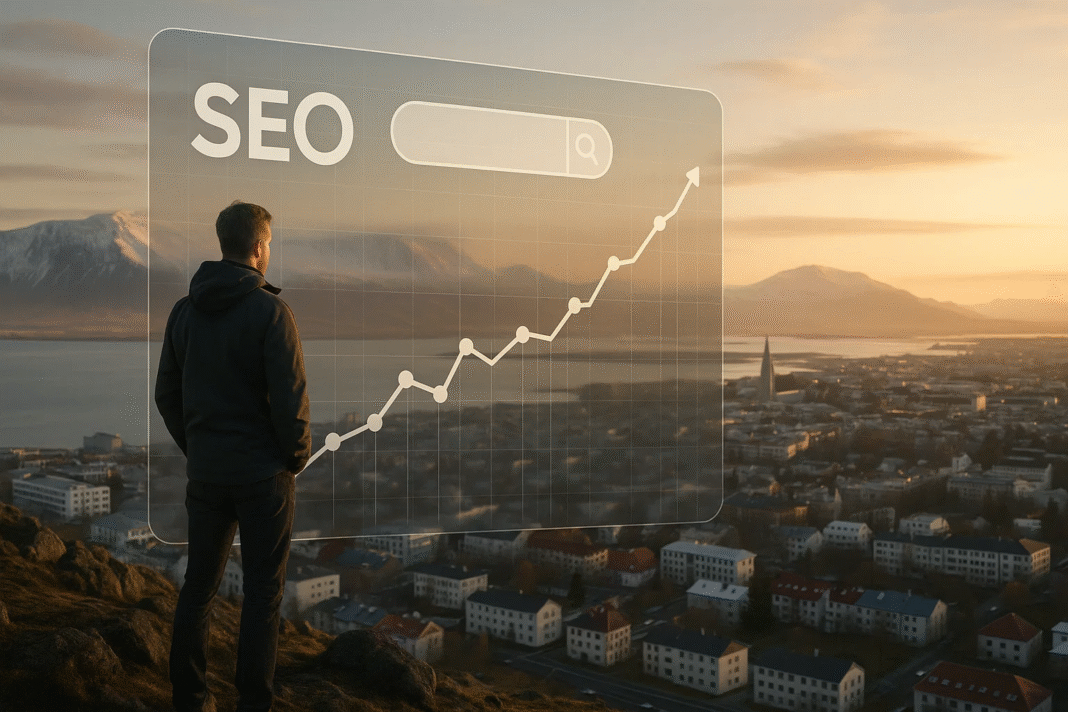Key Takeaways
- Iceland’s SEO in 2025 demands AI-ready content strategies to align with generative search and AI Overviews for maximum visibility.
- Bilingual optimization is crucial, balancing Icelandic for locals and English for the thriving tourism market.
- Technical SEO and Core Web Vitals mastery provide a decisive competitive advantage in Iceland’s fast, digitally advanced market.
Iceland’s digital economy in 2025 stands at a unique crossroads where cutting-edge technology, a highly connected population, and a dynamic tourism-driven market converge to create one of the most exciting search engine optimisation (SEO) landscapes in Europe. Known for its world-class internet infrastructure and tech-savvy citizens, Iceland has embraced digital transformation at a pace that few nations can match. With over 99% internet penetration and some of the fastest broadband speeds globally, the country offers businesses — both local and international — an extraordinary opportunity to reach engaged, online-first audiences.
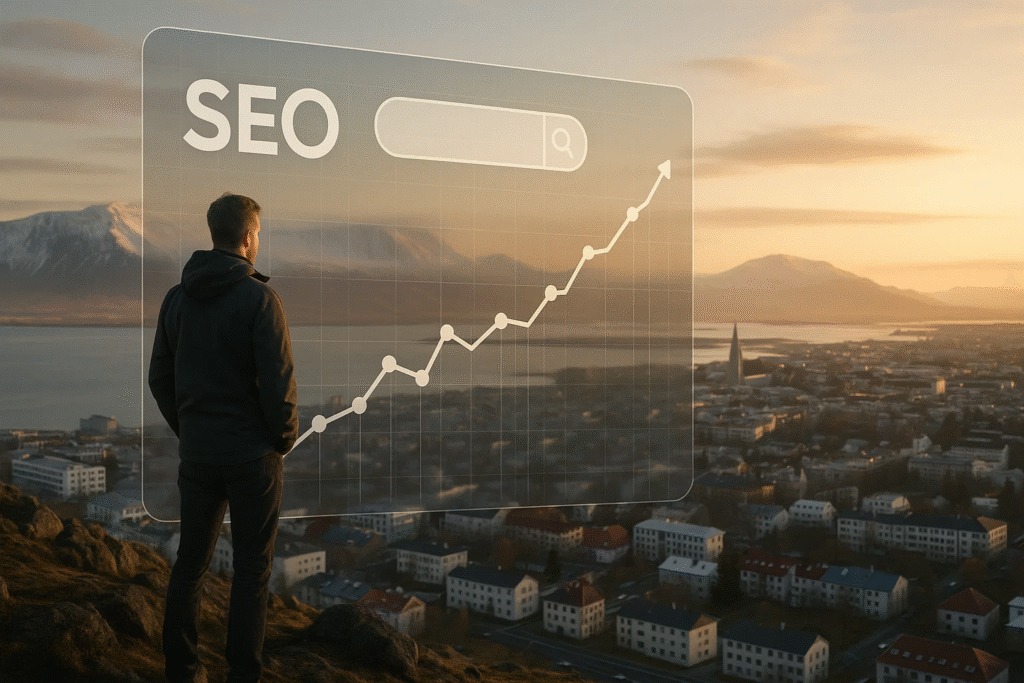
Yet, succeeding in Iceland’s search ecosystem requires more than simply ranking on Google. The year 2025 is witnessing a profound shift in how Icelandic users discover, consume, and interact with digital content. The rapid adoption of AI-powered search, including Google’s AI Overviews, has fundamentally redefined what it means to capture visibility. Search engine results pages (SERPs) are no longer static lists of blue links — they are dynamic, context-aware experiences that surface summaries, recommendations, and citations powered by machine learning. Businesses that fail to adapt risk becoming invisible, as zero-click searches and AI-generated answers capture user attention directly on the SERP.
Another defining factor is Iceland’s bilingual market reality. The country’s small but highly literate population consumes content in both Icelandic and English, with English often serving the massive tourist audience that contributes significantly to the national economy. This creates a dual challenge for brands: to deliver hyper-relevant, Icelandic-language content that speaks to domestic consumers, while simultaneously optimising for English-language queries targeting visitors researching tours, accommodations, and experiences.
From a technical standpoint, Iceland’s lightning-fast internet has raised user expectations for site performance to an all-time high. Core Web Vitals, mobile-first design, and frictionless checkout flows are no longer optional — they are essential for both search rankings and user satisfaction. In 2025, websites that fail to meet Google’s performance benchmarks will not only lose traffic but risk damaging brand trust among Iceland’s digitally sophisticated users.
Additionally, Iceland’s strict adherence to privacy and data protection laws, in line with the EU’s GDPR, is reshaping how marketers can collect, process, and leverage user data. Invasive tracking and aggressive retargeting campaigns are falling out of favour, with businesses instead investing in ethical, value-driven inbound marketing and building long-term authority through trust and expertise.
Economically, the Icelandic e-commerce market continues its steady growth, with mobile commerce now dominating more than 70% of online purchases. This creates fertile ground for businesses that are willing to invest in robust local SEO strategies, optimised Google Business Profiles, and content that satisfies both transactional and informational intent.
This comprehensive report explores the current state of SEO in Iceland in 2025, diving into key trends, challenges, and opportunities shaping the market. It will cover the rise of AI-driven search, the importance of bilingual and locally relevant content strategies, technical optimisation imperatives, and the evolving economic and regulatory environment. Whether you are an Icelandic business owner, a digital marketing professional, or an international brand seeking to penetrate this unique market, understanding these factors is essential for building a competitive, future-proof SEO strategy in 2025 and beyond.
But, before we venture further, we like to share who we are and what we do.
About AppLabx
From developing a solid marketing plan to creating compelling content, optimizing for search engines, leveraging social media, and utilizing paid advertising, AppLabx offers a comprehensive suite of digital marketing services designed to drive growth and profitability for your business.
At AppLabx, we understand that no two businesses are alike. That’s why we take a personalized approach to every project, working closely with our clients to understand their unique needs and goals, and developing customized strategies to help them achieve success.
If you need a digital consultation, then send in an inquiry here.
Or, send an email to [email protected] to get started.
The State of SEO in Iceland in 2025
- The Digital Foundation: Iceland’s Hyper-Connected Ecosystem
- The Search Landscape and User Intent
- Critical SEO Pillars in the Icelandic Context
- Strategic SEO Opportunities in Key Sectors
- The Evolving Landscape: AI, Privacy, and Data Protection
- The Cost of SEO in Iceland: Investment Analysis
- Strategic Recommendations & Future Outlook
1. The Digital Foundation: Iceland’s Hyper-Connected Ecosystem
A. Internet and Mobile Penetration: A Near-Universal Digital Presence
Understanding the state of SEO in Iceland in 2025 begins with examining its unique digital infrastructure, user behavior, and technology adoption rates. Iceland is not just a digitally advanced nation — it is a near-perfect example of a hyper-connected society, where internet penetration, mobile connectivity, and social engagement are nearly universal. This creates a highly competitive, fast-evolving environment for businesses seeking online visibility.
Digital Landscape Overview
- Population & Connectivity
- Total population: ~396,000
- Internet users: ~392,000 (99% penetration)
- Year-over-year growth: +1.4% (≈ 5,258 new users)
- Implication: Almost no untapped offline audience — SEO must focus on engagement, retention, and maximizing visibility within a digitally mature market.
- Mobile Dominance
- Active mobile connections: ~585,000 (148% of population)
- Growth from previous year: +3.5% (≈ 20,000 new connections)
- Insights:
- High multi-device ownership — users often carry multiple smartphones, tablets, and connected IoT devices.
- SEO implication: Mobile-first indexing is non-negotiable. Businesses must ensure cross-device compatibility, ultra-fast load speeds, and responsive designs optimized for both search engines and users.
- Social Media Engagement
- Social media users: ~313,000 (≈ 79% of population)
- Growth from 2024: +13.4% (≈ 37,000 new users)
- Strategic takeaway: Social platforms remain a powerful driver for brand discovery, content amplification, and off-page SEO signals.
Key SEO Implications for 2025
- Hyper-Competition for Visibility
- With nearly all Icelanders online, businesses must focus on high-quality, differentiated content to cut through the noise.
- Local SEO is crucial for targeting both Reykjavík’s urban markets and rural areas with location-specific search queries.
- Mobile-First SEO as a Baseline
- Multi-device behavior demands flawless UX across smartphones, tablets, and other devices.
- Google’s mobile-first indexing places significant weight on site speed, mobile usability, and structured data.
- Social SEO and Engagement
- Leverage social media platforms to generate backlinks, build brand authority, and increase search visibility.
- Integrate shareable content formats — short-form video, infographics, and local storytelling — to boost engagement metrics.
Data Matrix: Iceland’s Digital Profile (2025)
| Metric | Value | YoY Growth | SEO Implication |
|---|---|---|---|
| Internet Penetration | 99% | +1.4% | Focus shifts to quality engagement over user acquisition |
| Mobile Connections | 148% of pop. | +3.5% | Mobile-first and multi-device UX are mandatory |
| Social Media Usage | 79% of pop. | +13.4% | Social signals and shareable content boost ranking potential |
B. The Super-Fast Network: Eliminating Infrastructure as a Barrier
Iceland’s digital infrastructure is one of the most advanced in the world, effectively removing connectivity as a limiting factor in SEO strategy. By 2025, Iceland is not simply connected — it is ultra-connected, with broadband and fibre coverage that delivers near-universal gigabit speeds. This environment fundamentally reshapes how businesses must approach search engine optimization, as poor technical performance can no longer be blamed on user-side limitations.
High-Speed Connectivity and Global Rankings
- Global Leadership in Broadband Performance
- Iceland ranked 6th worldwide for fixed broadband download speeds in May 2025.
- Average download speed: 297.5 Mbps, making it one of the fastest and most reliable networks globally.
- Median download speed: 241.45 Mbps as of January 2025, a 6.8% increase YoY, reflecting continuous network investment.
- Universal Fibre-to-the-Home (FTTH) Access
- 97.5% of households are connected to full-fibre (FTTH) infrastructure.
- Minimum guaranteed speed: 1 Gbit/s, available across the country, even in rural areas.
- Strategic takeaway: Every user has access to high-performance internet, removing “slow connections” from the SEO troubleshooting equation.
SEO Implications of Superior Infrastructure
- Technical SEO Becomes a Competitive Battleground
- Page speed issues in Iceland are almost entirely attributable to website performance, not user connectivity.
- Unoptimized code, oversized media assets, and inefficient server setups directly translate into lost rankings and conversions.
- Heightened Importance of Core Web Vitals
- With near-instant user internet speeds, Core Web Vitals (CWV) scores become the primary determinant of whether a website feels “fast.”
- Sites must focus on:
- Largest Contentful Paint (LCP): Delivering key content within 2.5s or faster.
- First Input Delay (FID): Minimizing JavaScript execution delays for instant interactivity.
- Cumulative Layout Shift (CLS): Preventing disruptive layout shifts that harm UX.
- Mobile-First Indexing Optimization
- Google’s algorithms reward technically flawless experiences.
- Businesses must deliver a smooth, consistent performance across mobile devices, tablets, and desktops to remain competitive.
Data Matrix: Iceland’s Digital Speed Profile (2025)
| Metric | Value | YoY Change | SEO Implication |
|---|---|---|---|
| Avg. Fixed Download Speed | 297.5 Mbps | +6.8% | Enables flawless streaming and rich media — no excuses for slow sites |
| Median Download Speed | 241.45 Mbps | +6.8% | Confirms near-universal high performance |
| FTTH Household Coverage | 97.5% | N/A | Businesses must fully optimize websites for speed and efficiency |
| Minimum Guaranteed Speed | 1 Gbit/s | N/A | Any page load delay is due to site performance, not user internet |
C. E-commerce Market Dynamics: The Rise of Mobile Commerce
Iceland’s e-commerce sector is entering a pivotal growth phase in 2025, shaped by a digitally mature population, widespread cashless payments, and an increasingly mobile-first consumer mindset. This unique combination positions Iceland as one of the most competitive and innovation-driven online markets in Europe, demanding advanced SEO and digital marketing strategies to capture market share.
E-Commerce Market Outlook
- Market Valuation and Growth Potential
- Estimated market size in 2025: USD 1.04 billion
- Projected market size by 2030: USD 2.03 billion
- Growth trajectory: 14.31% CAGR, reflecting strong long-term momentum
- Alternate forecasts suggest a more conservative growth pattern:
- 2024 valuation: USD 977 million
- Expected 2025 growth: 0–5%, signaling possible market maturity
- Strategic insight: Regardless of the precise figures, the market continues to represent a lucrative opportunity for brands that optimize for digital visibility and conversion.
- Drivers of Growth
- Highly digital population with near-universal internet access
- Advanced payment ecosystem favoring cash-lite transactions
- Increased consumer trust in online shopping, supported by robust cybersecurity measures and reliable last-mile delivery infrastructure
Dominance of Mobile Commerce
- Mobile’s Market Share
- Share of e-commerce transactions conducted via mobile: 72% in 2024
- Projected growth rate: 13.8% annually through 2030
- Key takeaway: Mobile commerce is no longer an emerging trend — it is the dominant mode of online retail activity.
- Comparison to Overall Mobile Internet Usage
- Share of mobile web traffic: 62.45% in 2025
- Insight: The fact that mobile’s share of sales exceeds its share of browsing highlights that Icelanders prefer to complete purchases via mobile rather than desktop.
- Implications for SEO and Digital Marketing
- A mobile-commerce-first strategy is critical:
- Optimize mobile page speed to minimize bounce rates.
- Design responsive and intuitive UX with clear CTAs and simplified navigation.
- Integrate one-click checkouts, digital wallets, and local payment solutions.
- Focus on mobile-optimized product descriptions, schema markup, and structured data for improved search engine visibility.
- A mobile-commerce-first strategy is critical:
Data Matrix: Iceland’s E-Commerce & Mobile Commerce Landscape (2025)
| Metric | 2024 / 2025 Value | Projected Trend (2030) | Strategic Implication |
|---|---|---|---|
| Total E-Commerce Market Size | USD 1.04B (2025) / USD 977M (2024 alt.) | USD 2.03B (2030) | Consistent growth opportunity; SEO crucial for market capture |
| CAGR (2025–2030) | 14.31% | — | Long-term digital investment pays dividends |
| Mobile Commerce Share | 72% (2024) | +13.8% annual growth | Businesses must prioritize mobile-first sales funnels |
| Mobile Internet Traffic Share | 62.45% (2025) | Increasing annually | More conversions occur on mobile than desktop; UX optimization is critical |
2. The Search Landscape and User Intent
A. Search Engine Market Share: The Google Monolith
The foundation of a winning SEO strategy in Iceland in 2025 lies in understanding how users search, what platforms they rely on, and what intent drives their queries. Iceland’s digital audience is highly search-savvy, and their behavior reveals a preference for fast, accurate, and relevant results — with Google acting as the dominant gateway to information.
Search Engine Market Share: Google’s Near-Total Dominance
- Google’s Leadership
- Google’s market share: 88.34% (August 2025)
- Historical comparison: 93.86% in April 2022 — indicating a gradual but notable decline.
- Strategic insight: Google remains the primary SEO battlefield, but the slow rise of alternative search engines suggests new opportunities for niche targeting.
- Performance of Other Search Engines
- Bing: 5.51% market share — slightly higher adoption compared to past years, often linked to default browser settings in enterprise environments.
- DuckDuckGo: 3.37% — growth driven by increasing interest in privacy-first search experiences.
- Yandex: 1.17% — likely used by Russian-speaking expatriates and niche communities.
- Yahoo!: 0.87% — minimal impact but not negligible for diversified search strategies.
- Strategic SEO Recommendations
- Primary Focus: Google-first strategy remains essential for organic visibility.
- Secondary Opportunities:
- Allocate a small percentage of optimization efforts to Bing and DuckDuckGo, as competition is lower, allowing faster rankings for targeted terms.
- Consider Yandex for Russian-language SEO campaigns targeting specific expat audiences.
User Preferences and Search Behavior
- Global vs. Local Domain Usage
- Google.com usage: 87.47% of Icelandic users prefer the global domain.
- Google.is usage: Only 2.16%, showing minimal local-domain reliance.
- Implication: SEO strategies should prioritize global search visibility while integrating geo-targeted Iceland-specific keywords and local structured data to maintain local relevance.
- User Intent and Keyword Strategy
- Icelandic users favor search queries in both Icelandic and English, depending on the topic — making bilingual SEO crucial.
- High prevalence of transactional queries (e.g., e-commerce, travel bookings) indicates a strong readiness to convert.
- Informational searches often revolve around sustainability, green energy, and local events, aligning with Iceland’s cultural and economic priorities.
Data Matrix: Search Engine Market Share in Iceland (2025)
| Search Engine | Market Share (%) | YoY Trend | SEO Focus Recommendation |
|---|---|---|---|
| 88.34 | Slight Decline | Prioritize for core SEO strategy (global & local keyword mix) | |
| Bing | 5.51 | Moderate Growth | Target for low-competition ranking opportunities |
| DuckDuckGo | 3.37 | Growth | Optimize privacy-friendly content for niche audiences |
| Yandex | 1.17 | Stable | Consider only for Russian-language campaigns |
| Yahoo! | 0.87 | Declining | Low priority, minimal impact |
B. The Bilingual SEO Imperative: Optimizing for a Unique Audience
Iceland’s linguistic landscape introduces a distinctive SEO challenge that requires far more than literal translation. The country’s population is functionally bilingual, creating a complex search environment where both Icelandic and English queries must be anticipated and optimized for simultaneously. This dual-language reality is a defining factor for search strategy in 2025 and demands precision in content creation, keyword targeting, and technical SEO execution.
Linguistic Profile of Iceland’s Digital Audience
- Language Usage
- Icelandic: Spoken by 93.2% of the population as the primary language.
- English: Ubiquitous in education and culture — 88% of Icelanders hear English daily, and nearly all are proficient in reading and writing it.
- Implication for SEO: Iceland’s audience seamlessly switches between languages depending on context, topic, and intent.
- Bilingual Search Behavior
- English is often used for:
- Tourism-related searches — e.g., “Golden Circle tour,” “whale watching Reykjavik.”
- Global brands, international entertainment, and tech-related queries.
- Icelandic is more common for:
- Domestic services — e.g., “pípulagningamaður Reykjavik” (plumber in Reykjavik).
- Local products, government information, and community-focused content.
- Hybrid behavior: Many Icelanders mix Icelandic and English terms within a single query, creating unique keyword combinations.
- English is often used for:
Strategic Implications for SEO in 2025
- Advanced Keyword Research
- Move beyond direct translation; conduct language-specific keyword research to identify unique search volumes for both Icelandic and English queries.
- Map user personas to their preferred search language:
- Tourists: English-focused content with high-conversion CTAs.
- Local Consumers: Icelandic-focused pages emphasizing trust, local relevance, and proximity.
- Content Strategy
- Develop language-specific landing pages for high-volume queries.
- Utilize hreflang tags to ensure proper indexing and avoid duplicate content penalties.
- Craft multilingual meta titles, descriptions, and headings that naturally incorporate both Icelandic and English keywords when appropriate.
- Technical & On-Page Optimization
- Ensure proper character encoding and Unicode support to handle Icelandic diacritics (e.g., á, ð, þ).
- Implement schema markup in both languages for structured data that aligns with Google’s multilingual indexing.
Data Matrix: Icelandic Bilingual Search Patterns (2025)
| Audience Segment | Primary Search Language | Example Queries | SEO Recommendation |
|---|---|---|---|
| International Tourists | English | “Golden Circle tour”, “whale watching Reykjavik” | Create English-first landing pages optimized for conversions and rich snippets |
| Local Consumers | Icelandic | “pípulagningamaður Reykjavik”, “veitingastaður nálægt mér” | Build Icelandic content focused on local intent and map listings |
| Tech & Global Brands | English | “iPhone 15 price Iceland”, “Netflix Iceland content” | Optimize with English keywords and structured product data |
| Mixed-Query Users | Both (hybrid) | “Best veitingastaður Reykjavik”, “cheap flug Iceland” | Include bilingual keyword targeting within content and metadata |
C. User Behavior and Search Trends: A Focus on the Tourism Vertical
Tourism remains one of Iceland’s most powerful economic pillars, and understanding tourist-driven search behavior is essential for building high-converting SEO strategies in 2025. With international arrivals and visitor spending continuing to rise, the opportunity for tourism-focused businesses — from tour operators to local service providers — is significant.
Tourism Market Performance
- Visitor Numbers & Growth
- 2.26 million international tourist arrivals recorded in 2024
- Represents a 2.3% year-over-year increase, reflecting sustained demand for Iceland as a travel destination
- Tourism Revenue
- Total tourist expenditure: USD 4.20 billion in 2024
- 35.5% increase from 2023, showing strong post-pandemic recovery and rising per-visitor spending
- Average spend per visitor: USD 1,858 per trip, indicating a high-value audience with strong purchasing power
Search Behavior of Tourists
- Purpose of Visits
- 93% of trips classified as holiday-related, suggesting that most searches are connected to leisure activities and experiences
- Nature of Search Queries
- Predominantly high-intent transactional searches focused on booking activities, accommodations, and tours
- Examples of common queries:
- “Golden Circle highlights”
- “Glacier hiking Iceland”
- “Best whale watching Reykjavik”
- These searches reveal a strong readiness to purchase, making SEO optimization critical for conversions
- Strategic SEO Recommendations
- Create experience-driven landing pages targeting specific activities and attractions
- Use structured data (e.g.,
TravelAction,Event, andOfferschema) to secure rich snippets, map pack visibility, and AI overview placements - Optimize content for mobile-first experiences, as tourists frequently plan and book on-the-go via smartphones
Search Engine Market Share in Iceland (August 2025)
| Search Engine | Market Share (%) | Strategic SEO Insight |
|---|---|---|
| 88.34 | Remains the core platform for SEO investment; optimize for rich results and mobile-first indexing | |
| Bing | 5.51 | Useful for targeting travelers using Microsoft Edge or Windows devices |
| DuckDuckGo | 3.37 | Opportunity to reach privacy-conscious travelers seeking unbiased results |
| Yandex | 1.17 | Niche opportunity for Russian-speaking tourists and expats |
| Yahoo! | 0.87 | Minimal impact but can capture older demographics |
| Ecosia | 0.41 | Appeals to eco-conscious users, aligning with Iceland’s sustainability-focused tourism narrative |
SEO Opportunity Matrix: Tourism Vertical (2025)
| Element | Importance | Recommended Action |
|---|---|---|
| High-Intent Keywords | Critical | Focus on transactional phrases (“book,” “tour,” “reserve”) and location-specific modifiers |
| Schema Markup | High | Implement TravelAction, Event, Breadcrumb, and Review schema for richer SERP presence |
| Local SEO & Maps Visibility | High | Optimize Google Business Profiles with photos, updated hours, and reviews |
| Mobile Optimization | Essential | Ensure lightning-fast load speeds, responsive design, and frictionless mobile checkout |
| Multilingual Content | High | Provide pages in both English (for tourists) and Icelandic (for locals and domestic travelers) |
3. Critical SEO Pillars in the Icelandic Context
A. Technical SEO and Core Web Vitals: A Competitive Edge
Iceland’s digital environment is distinctive in its maturity and reliability, with internet infrastructure that is considered among the strongest in the world. This creates a unique SEO ecosystem where technical refinement and precision-driven local optimization often determine market leaders. To excel in 2025, businesses must emphasize Core Web Vitals, mobile-first design, and advanced technical audits to capture both the resident population and the high-value tourism sector.
Technical SEO and Core Web Vitals: Iceland’s Competitive Lever
- Importance of Core Web Vitals (CWV)
Google’s Core Web Vitals remain a critical ranking factor, focusing directly on user experience:- Largest Contentful Paint (LCP): Measures main content load speed; optimal performance is below 2.5 seconds.
- Interaction to Next Paint (INP): Evaluates responsiveness of interactive elements; optimal score is under 200 milliseconds.
- Cumulative Layout Shift (CLS): Assesses visual stability; optimal threshold is below 0.1.
- Context in Iceland
- With ultra-fast internet speeds nationwide, poor CWV scores are rarely caused by bandwidth limitations. Instead, they highlight inefficient site development, heavy page sizes, or lack of mobile optimization.
- Google’s mobile-first indexing further amplifies the importance of responsive, lightweight, and stable website design.
- Competitive Advantage
- Many Icelandic businesses underinvest in technical SEO, leaving a gap for competitors who prioritize CWV optimization.
- A structured technical SEO audit, targeting page size reduction, caching improvements, and responsive frameworks, can yield disproportionate ranking advantages.
Case Study Evidence: ROI of Technical Optimization
- Scenario: A non-profit organization in Iceland undertook a comprehensive Core Web Vitals optimization project.
- Key Improvements:
- Page size reduced from 5.33 MB to 602 KB
- Mobile-first adjustments applied to resolve rendering issues
- Results Achieved:
- +35,000 monthly search impressions gained
- +7,000 additional monthly sessions recorded
- Vastly improved Google Search Console performance scores across all CWV categories
- Insight: This demonstrates that investing in technical precision alone — even without new content or backlinks — can significantly enhance organic visibility and search traffic.
SEO Opportunity Matrix: Technical Priorities for Iceland in 2025
| Technical Factor | Importance Level | Competitive Insight | Recommended Action |
|---|---|---|---|
| Largest Contentful Paint (LCP) | Critical | High competition for fast-loading mobile pages | Optimize media compression and server response times |
| Interaction to Next Paint (INP) | Critical | Directly affects engagement and conversions | Refactor JavaScript, optimize interaction handling |
| Cumulative Layout Shift (CLS) | High | Visual instability impacts trust and UX | Implement fixed dimensions for elements, prioritize stable layouts |
| Mobile-First Design | Essential | Tourists and locals search predominantly on mobile | Ensure responsive frameworks, adaptive image serving |
| Page Size & Speed | High | Many local sites remain bloated | Reduce code bloat, enable caching, use CDN for distribution |
Chart: Impact of Core Web Vitals Optimization
Performance Gains (Non-Profit Case Study, Iceland)
--------------------------------------------------
Metric | Before Optimization | After Optimization
--------------------------------------------------
Page Size (KB) | 5,330 | 602
Monthly Impressions | 12,000 | 47,000
Monthly Sessions | 3,500 | 10,500
LCP Score (seconds) | 4.2 | 1.8
CLS Score | 0.24 | 0.08
INP Score (ms) | 420 | 175B. Local SEO for Domestic and Tourist Markets
In Iceland’s digital ecosystem, local SEO plays a pivotal role in bridging businesses with two distinct yet highly lucrative audiences — the domestic population and the international tourism market. The country’s unique geography and population density, coupled with its status as a global tourism destination, make local visibility one of the most critical growth levers for businesses in 2025.
Geographic and Demographic Context
- Urban Concentration:
- Over 66% of Iceland’s population resides in Reykjavík and its metropolitan area.
- This urban centralization amplifies the impact of local search optimization, as most consumer-facing businesses compete for visibility within a relatively small geographic zone.
- Tourism-Driven Demand:
- 97% of visitors in 2024 were drawn to the Capital Region, indicating that local search presence in Reykjavík has direct revenue implications.
- Tourists rely heavily on mobile devices and location-based searches (“near me” queries), making local SEO a crucial driver for hospitality, dining, entertainment, and retail sectors.
Google Business Profile (GBP) Optimization
- Profile Accuracy and Completeness
- Claim and verify GBP listings to build trust signals.
- Provide precise NAP data (Name, Address, Phone Number), operating hours, and seasonal adjustments to avoid customer frustration.
- Utilize high-quality images and videos showcasing products, services, and premises to boost engagement rates.
- Category Selection
- As of August 2025, Google offers 3,794 GBP categories — businesses must select the most niche-relevant category to maximize discoverability.
- Example: A Reykjavík whale-watching operator should choose “Boat Tour Agency” rather than a generic “Travel Agency” to appear in intent-driven search results.
Citation Building and Local Authority
- Importance of Consistency
- Building local citations across Icelandic directories strengthens local SEO signals and contributes to higher map pack rankings.
- Consistent NAP data across all platforms ensures Google can confidently associate a business with a geographic location.
- Key Icelandic Citation Sources PlatformDomain Authority (DA)Relevance for Local SEOen.ja.is73High authority, trusted by localsis.wowcity.com44Good secondary citation sourceleit.isModerateAdds depth to citation portfolio
- Actionable Insight
- A comprehensive citation strategy should include global directories (e.g., TripAdvisor, Yelp) for tourist-facing businesses and Iceland-specific directories for domestic service providers.
Serving Both Audiences: A Dual-Purpose Strategy
- For Residents:
- Optimize for Icelandic keywords related to local services (e.g., “pípulagningamaður Reykjavík” for plumbing services).
- Leverage customer reviews and Q&A features to build trust signals within the community.
- For Tourists:
- Focus on English-language queries and transactional intent (e.g., “best restaurants near Reykjavík harbor”).
- Implement schema markup (e.g.,
LocalBusiness,TouristAttraction) to enhance appearance in AI Overviews, featured snippets, and Google Maps results.
Core Web Vitals Benchmarks for Local Search Performance
| Metric | Good | Needs Improvement | Poor |
|---|---|---|---|
| Largest Contentful Paint (LCP) | < 2.5 seconds | 2.5–4.0 seconds | > 4.0 seconds |
| Interaction to Next Paint (INP) | < 200 ms | 200–500 ms | > 500 ms |
| Cumulative Layout Shift (CLS) | < 0.1 | 0.1–0.25 | > 0.25 |
Insight: Fast, mobile-friendly websites significantly outperform competitors in local results, particularly in Iceland where internet infrastructure removes speed limitations, leaving optimization entirely in the hands of developers and marketers.
4. Strategic SEO Opportunities in Key Sectors
A. The Tourism Industry: A Case Study in SEO
Iceland’s economic structure presents a distinctive landscape for SEO strategists, with certain sectors offering disproportionately high returns for well-executed campaigns. While the universal principles of search optimization remain relevant, businesses that align their strategies with Iceland’s sector-specific dynamics can secure a significant competitive edge in 2025.
Tourism: Iceland’s Flagship SEO Opportunity
- Economic Significance
- Tourism remains Iceland’s largest export sector and a cornerstone of GDP growth.
- Visitor arrivals surged from a pandemic low of 486,000 in 2020 to 1.8 million in 2022, reaching 2.26 million in 2024 — a 2.3% YoY increase.
- Tourist spending hit $4.20 billion in 2024, a 35.5% increase compared to 2023, surpassing pre-pandemic benchmarks and underscoring the sector’s recovery momentum.
- Search Intent and Behavioral Insights
- 93% of trips are leisure-focused, meaning most searches are high-intent, transactional queries.
- Common search themes include:
- Adventure and nature activities: “glacier hiking Iceland,” “northern lights tours.”
- Scenic routes and attractions: “Golden Circle itinerary,” “Glacier Lagoon tours.”
- Experience-based bookings: “whale watching Reykjavik tickets,” “Iceland horse riding tours.”
- Seasonal search spikes align with natural events (e.g., aurora borealis season, summer hiking season), creating predictable traffic patterns that businesses can target with timely content marketing campaigns.
SEO Strategy Recommendations for Tourism Businesses
- Keyword Targeting and Content Architecture
- Build topical authority clusters around major attractions and itineraries.
- Use long-tail transactional keywords (e.g., “book Golden Circle tour online”) to capture purchase-ready visitors.
- Develop localized landing pages for each attraction or service to maximize relevance in Google’s mobile-first results.
- Technical and On-Page Optimization
- Implement structured data (schema) such as
TouristAttraction,Event, orTravelActionto appear in rich results, AI Overviews, and Google Travel panels. - Optimize page speed and mobile UX to match Iceland’s world-class internet infrastructure, ensuring minimal friction between discovery and booking.
- Implement structured data (schema) such as
- Conversion-Rate Optimization (CRO)
- Integrate clear CTAs, one-click booking buttons, and multi-language options (English + Icelandic) to serve both tourists and local travelers.
- Offer dynamic pricing and real-time availability to capture impulse bookings from mobile users.
Opportunity Matrix: Tourism SEO in Iceland (2025)
| SEO Focus Area | Priority Level | Business Impact | Notes for 2025 |
|---|---|---|---|
| Localized Landing Pages | Very High | Strong | Capture “near me” and geo-specific searches |
| Structured Data (Schema) | High | Strong | Improves visibility in AI-driven SERPs |
| Long-Tail Transactional Keywords | Very High | Strong | Drives direct bookings, reduces OTA dependency |
| Seasonal Content Planning | High | Moderate | Aligns with predictable travel peaks |
| Mobile-First Optimization | Critical | Strong | Matches Iceland’s high-speed, mobile-heavy usage |
Strategic Takeaway
Businesses that invest in SEO tailored to the tourism vertical stand to benefit from Iceland’s steadily growing visitor economy. By aligning content strategies with seasonal demand, leveraging structured data, and optimizing for mobile-first transactions, brands can transform search visibility into measurable revenue growth.
B. Other Emerging Industries and Digital Marketing Trends
Iceland’s economy is diversifying rapidly, and with it, the role of SEO has evolved into a mission-critical growth channel across multiple industries. Beyond the tourism sector, several key verticals — notably technology and fisheries — are leveraging search visibility and digital campaigns to compete in an increasingly global market.
Technology and IT: A Data-Driven SEO Battleground
- Industry-Wide Adoption of SEO
- A TechBehemoths survey revealed that 70% of IT companies in Iceland rank SEO as their primary lead-generation channel.
- This figure is among the highest globally, signaling a mature, digitally sophisticated ecosystem where companies actively compete for top organic search positions.
- Strategic Imperatives for Tech Firms
- Thought Leadership Content: Whitepapers, technical blogs, and case studies establish expertise and authority.
- Long-Tail B2B Keywords: Capture high-intent buyers searching for niche services such as “custom AI development Iceland” or “cloud integration Reykjavik.”
- Link-Building and Digital PR: Collaborations with global tech publications enhance domain authority and build trust signals for Google’s ranking algorithms.
- SEO as a Core Business Function
- In a small but highly competitive market, organic visibility can make or break pipeline growth.
- IT firms are prioritizing technical SEO audits, schema implementation, and content refresh cycles to maintain first-page dominance.
Fisheries and Marine Industry: From Tradition to Digital Transformation
- The Social Media Effect
- During the COVID-19 pandemic, fish-oil producers observed the massive influence of social media on purchasing decisions, with consumers “accidentally influenced” by posts, influencer endorsements, and peer reviews.
- This shift highlights the importance of integrating SEO with social strategies, ensuring a unified digital footprint across search and social ecosystems.
- Marketing the “100% Fish” Innovation
- Iceland’s “100% Fish” program aims to utilize over 90% of each fish to create innovative products, including pet food, nutraceuticals, and fish leather for fashion.
- SEO strategies can amplify this narrative by:
- Creating sustainability-focused content to attract eco-conscious consumers.
- Targeting global audiences with multilingual content to expand market reach.
- Using video and visual storytelling to enhance engagement and social shareability.
Opportunity Matrix: SEO Potential in Emerging Industries (2025)
| Industry | SEO Maturity Level | Strategic Focus Areas | Growth Opportunity |
|---|---|---|---|
| Technology & IT | High | Long-tail B2B keywords, technical SEO, thought leadership content | Strong – Mature, competitive sector where SEO is a business driver |
| Fisheries & Marine | Moderate | Sustainability storytelling, social + SEO integration, multimedia campaigns | Emerging – Room for digital transformation and global brand positioning |
| Sustainable Innovation | Moderate | Content marketing, PR, education-based SEO campaigns | High – Rising consumer demand for ethical and eco-friendly products |
Strategic Takeaways
- B2B SEO is Mission-Critical: In Iceland’s IT sector, SEO is not a “nice-to-have” but a primary driver of qualified leads.
- Content and Authority Matter: Businesses that invest in advanced content marketing, technical audits, and link acquisition gain an outsized advantage.
- Social + Search Convergence: Industries like fisheries must blend SEO with social engagement to capture both search-driven and influence-driven demand.
5. The Evolving Landscape: AI, Privacy, and Data Protection
A. The Rise of AI and its Impact on SEO
Iceland’s SEO environment in 2025 is being reshaped by two powerful, converging forces: the rapid integration of artificial intelligence into search and a strict privacy-first legal framework that governs how user data is collected and used. Together, these dynamics demand that brands adopt smarter, more technically sophisticated, and compliance-driven approaches to maintain visibility and trust in an increasingly competitive market.
The Rise of AI and Its Transformative Impact on Search
- AI Overviews Reshaping SERPs
- As of March 2025, AI Overviews appeared in over 13% of search queries, more than doubling their footprint since early 2025.
- This shift has led to a 30% decline in click-through rates (CTR) on traditional blue-link results, as users increasingly receive their answers directly within the SERP.
- Visibility vs. Traffic: A New SEO Paradox
- A brand may see its impressions increase as it is cited in AI Overviews.
- However, direct website traffic may decline, as users no longer need to click through when their informational needs are satisfied by the AI-generated summary.
- Authority-First SEO Strategies
- The new objective is no longer just to achieve the #1 ranking but to ensure brand inclusion within AI-generated summaries.
- Key tactics include:
- Structured Content Design: Presenting information in lists, tables, and concise data points that AI models can easily extract.
- Schema Markup Integration: Leveraging
FAQ,HowTo, andReviewschema to increase the likelihood of citation. - E-E-A-T Optimization: Ensuring content demonstrates Experience, Expertise, Authoritativeness, and Trustworthiness, aligning with Google’s evolving ranking systems.
AI Adoption as a National Priority
- Government-Led Digital Transformation
- Iceland is actively promoting AI adoption, with projections of up to 6% annual GDP growth by 2029 driven by AI integration across industries.
- This policy environment will likely accelerate AI-driven search adoption, making authority-focused SEO a critical competitive differentiator.
- Business Implications
- Brands that invest early in AI-compatible content structures will be better positioned to dominate search results in the next evolution of Google’s SERPs.
- Failure to adapt risks visibility erosion, even for companies that have historically ranked well.
Data Privacy and Regulatory Influence
- Privacy-First Legal Landscape
- Iceland maintains a strict compliance environment, aligned with GDPR and Nordic data ethics standards.
- Businesses must ensure that SEO tracking, analytics, and remarketing efforts respect user consent, transparency, and data minimization principles.
- Balancing Personalization with Privacy
- First-party data collection is becoming the primary engine for personalization, replacing cookie-based targeting.
- This shift reinforces the importance of:
- Optimizing landing pages for conversions to grow owned email lists.
- Using privacy-compliant analytics tools to measure SEO performance without compromising user trust.
Opportunity Table: AI-Driven SEO in Iceland (2025)
| Key Trend | Current Impact (2025) | Strategic Priority for Businesses | Recommended Actions |
|---|---|---|---|
| AI Overviews in SERPs | 13% query coverage, reducing CTR | Very High | Structure content for AI extraction, implement schema |
| CTR Decline on Organic Results | -30% avg. YoY | Critical | Focus on brand presence in AI summaries, not just rankings |
| Government AI Initiatives | 6% projected GDP growth by 2029 | High | Align SEO strategy with AI-readiness and automation |
| Privacy & GDPR Compliance | Strict enforcement | High | Use consent-based analytics, shift to first-party data collection |
Strategic Takeaway
The future of SEO in Iceland will be AI-driven, privacy-conscious, and authority-focused. Businesses that align their strategies with these realities — producing structured, citation-friendly content while respecting strict data protection laws — will not only maintain visibility but also capture a disproportionate share of Iceland’s digitally savvy, search-reliant audience.
B. Navigating Privacy and Data Laws
Iceland’s legal framework for data protection in 2025 has emerged as one of the most consumer-centric and stringent within Europe, positioning privacy as a cornerstone of the nation’s digital economy. For businesses seeking to compete in Iceland’s search landscape, this framework is not merely a compliance requirement but a defining factor that shapes the very nature of digital marketing strategies.
Core Principles of Icelandic Data Protection
- Alignment with European Standards
- Iceland mirrors the strict privacy standards of the EU, maintaining GDPR-equivalent protections that ensure lawful, fair, and transparent data handling.
- Businesses must demonstrate accountability and compliance, documenting how personal data is collected, processed, and stored.
- Key Consumer Rights
- Right of Access: Individuals may request full visibility into how their data is used.
- Right to Rectification: Users can demand corrections to inaccurate or outdated personal information.
- Right to Erasure (“Right to Be Forgotten”): Consumers may request complete deletion of their data under qualifying circumstances.
- Right to Object to Marketing: The law grants citizens the absolute right to refuse direct marketing, including profiling and retargeting efforts, at any time.
Implications for Digital Marketers
- Shift from Intrusive Tactics to Ethical Engagement
- Aggressive retargeting, cookie-based tracking, and unconsented lead generation face high regulatory barriers.
- This environment favors inbound marketing models, where businesses attract customers through valuable, trust-based content rather than invasive advertising.
- Organic Search as a Strategic Advantage
- SEO becomes a defensible, future-proof channel, enabling businesses to reach audiences without violating privacy principles.
- Brands that invest in high-quality, intent-driven content and technical SEO can build sustainable visibility even as paid advertising options face tighter restrictions.
Privacy-Driven SEO Strategy Framework
| Privacy Principle | Impact on Marketing | Recommended SEO Action |
|---|---|---|
| Right to Be Forgotten | Forces data deletion upon request | Build robust opt-out workflows and respect data retention limits |
| Right to Object to Marketing | Limits direct targeting and retargeting | Focus on content-led acquisition and long-tail keyword targeting |
| Transparency Requirements | Mandates clear disclosures | Add privacy-compliant notices and cookie consent banners |
| Lawful & Fair Processing | Requires explicit consent | Prioritize first-party data and privacy-safe analytics tools |
Strategic Takeaway
In Iceland’s 2025 digital environment, privacy-first compliance is not optional — it is a competitive differentiator. Companies that integrate transparency, ethical data practices, and inbound-first strategies into their SEO approach will earn consumer trust, reduce legal risk, and achieve sustainable growth.
Organic search — supported by well-structured, helpful, and intent-focused content — is positioned as the most powerful marketing channel in Iceland, offering a compliant pathway to long-term visibility in an increasingly privacy-regulated marketplace.
6. The Cost of SEO in Iceland: Investment Analysis
A. Freelance vs. Agency Costs
Understanding the true cost of SEO in Iceland in 2025 requires more than a simple price list — it demands a holistic analysis of the available models, the expected ROI, and the level of expertise required to compete in a rapidly evolving digital ecosystem. Iceland’s compact yet highly competitive online market makes SEO both a strategic necessity and a significant financial commitment for businesses seeking sustained visibility.
Key Factors Influencing SEO Costs
- Scope of Work
- Technical audits, keyword research, content creation, and link building all carry different cost structures.
- More comprehensive campaigns, particularly those targeting international visitors, command higher budgets.
- Market Competition
- Iceland’s tourism and technology sectors are highly competitive, requiring advanced strategies and expert execution.
- Businesses in niche B2B markets may find lower-cost campaigns sufficient if targeting a smaller, more specialized audience.
- Level of Expertise
- Rates vary significantly between freelancers, boutique agencies, and enterprise-level firms.
- Higher rates often reflect access to specialized talent, advanced tools, and performance-driven strategies.
Comparative Cost Matrix: Freelancers vs. Agencies vs. In-House
| Service Model | Hourly Rate (USD) | Monthly Retainer (USD) | Key Advantages | Ideal For |
|---|---|---|---|---|
| Freelancers | $39 – $78 (Reykjavík) | Project-based pricing | Flexible, cost-efficient, personalized approach | Startups, small businesses with limited budgets |
| Consultants | $150+ | Negotiable | Senior expertise, strategic guidance | Businesses seeking audits, high-level strategy |
| Local Agencies | $100 – $199 (popular range $100–$149) | $2,000 – $15,000 | Full-service packages, team-based execution | SMBs seeking consistent monthly SEO growth |
| Specialized Firms | Up to $300 | $20,000 – $50,000+ | Enterprise campaigns, advanced analytics, multi-lingual SEO | Large corporations, global brands |
Strategic Insights
- Freelance Approach
- Suitable for businesses requiring small, targeted SEO projects or one-time technical audits.
- Risk: Limited bandwidth may delay delivery on larger projects.
- Agency Engagement
- Ideal for businesses needing consistent, multi-channel SEO campaigns.
- Offers access to a full team: strategists, content writers, technical SEOs, and link builders.
- In-House Team
- Long-term investment but delivers tighter control over brand voice and faster execution cycles.
- Often cost-effective once a business reaches a scale where monthly retainers exceed hiring costs.
Cost vs. ROI Considerations
| Investment Level | Typical ROI Timeline | ROI Potential |
|---|---|---|
| Low (<$2,000/month) | 6–12 months | Gradual improvements, good for niche markets |
| Mid ($5,000–$15,000/month) | 3–6 months | Competitive growth, strong traffic and lead generation |
| Enterprise ($20,000+/month) | 3–4 months | Dominance in high-value keywords, multi-market expansion |
Strategic Takeaway
The Icelandic SEO market in 2025 rewards businesses that treat SEO not as an expense but as a strategic growth investment. Companies that allocate sufficient budget for technical optimization, content excellence, and authority-building can expect measurable gains in organic traffic, higher conversion rates, and long-term resilience against market volatility.
B. In-House SEO Salary Benchmarks
For organizations with a sustained focus on the Icelandic market, hiring and developing an in-house SEO team in 2025 is no longer merely an operational choice — it is a strategic investment that ensures tighter control, faster execution, and long-term cost efficiency. The relatively small yet digitally advanced Icelandic economy rewards brands that invest in internal expertise capable of continuously adapting to evolving algorithmic changes, AI-driven search, and local user intent.
Salary Landscape for SEO Professionals in Iceland
- Average Compensation in Reykjavík
- SEO Specialist: 9,844,548 ISK annually (≈ 4,733 ISK per hour)
- Entry-Level Specialist (1–3 years): 7,166,701 ISK annually
- Senior Specialist (8+ years): 12,115,137 ISK annually
- SEO Manager Benchmarks
- Average annual salary: 10,734,193 ISK (≈ 5,161 ISK per hour)
- Managers oversee strategy, reporting, and cross-functional coordination with content, development, and marketing teams.
Salary Benchmark Table
| Role | Annual Salary (ISK) | Hourly Rate (ISK) | Experience Level |
|---|---|---|---|
| Entry-Level SEO Specialist | 7,166,701 | ~3,447 | 1–3 years |
| Mid-Level SEO Specialist | 9,844,548 | ~4,733 | 4–7 years |
| Senior SEO Specialist | 12,115,137 | ~5,826 | 8+ years |
| SEO Manager | 10,734,193 | ~5,161 | 5+ years (team leadership) |
Strategic Advantages of In-House SEO Teams
- Cost Efficiency in the Long Term
- The hourly cost of a senior in-house SEO professional is often lower than the rate charged by agencies (typically $100–$199 per hour or higher).
- Over time, this delivers substantial savings, particularly for businesses managing multiple websites or e-commerce platforms.
- Direct Control Over Strategy
- Internal teams can adapt campaigns quickly in response to new algorithm updates, local market trends, or seasonal demand fluctuations.
- Ensures closer alignment with brand tone, values, and internal marketing goals.
- Knowledge Retention & Scalability
- Expertise remains within the company, reducing reliance on external vendors.
- Easier to scale efforts by adding content creators, data analysts, or technical SEOs as business needs grow.
Cost Comparison Matrix: In-House vs. Agency
| Model | Hourly Cost (ISK) | Flexibility | Best For |
|---|---|---|---|
| In-House Team | 3,447 – 5,826 | High (direct control) | Large brands, e-commerce, businesses seeking continuous optimization |
| Local Agency | 13,500 – 40,000+ (USD converted) | Moderate (contract-based) | SMBs seeking full-service expertise without hiring staff |
| Global Agency | 20,000 – 50,000+ (USD converted) | Low (fixed retainers) | Multinational campaigns targeting multiple geographies |
Key Insight for 2025
- Scalability Advantage: For brands with recurring SEO needs — such as travel operators, SaaS platforms, or large retailers — hiring in-house talent is a financially prudent and scalable solution.
- Hybrid Approach Potential: Many Icelandic companies in 2025 are adopting a hybrid model, combining in-house specialists with agency partners for technical audits, link acquisition campaigns, and AI-driven search optimization.
7. Strategic Recommendations & Future Outlook
A. SEO Strategy Pillars for 2025
The digital environment in Iceland in 2025 is defined not by a lack of competition but by the unique opportunities it presents to forward-thinking brands. Businesses that embrace precision, technical excellence, and linguistic nuance stand to gain disproportionate advantages. The next phase of SEO success in Iceland will depend on aligning strategy with user behavior, search engine evolution, and the country’s bilingual and highly connected population.
Core Strategic SEO Pillars for 2025
- Mobile-Commerce-First Optimization
- With 72% of all online transactions in Iceland completed via mobile devices, mobile-first is no longer a trend but an operational requirement.
- A winning strategy requires:
- Lightning-fast mobile page speed to reduce friction and bounce rates.
- Tap-to-buy and one-click checkout flows to capture high-intent users.
- Optimized mobile navigation and UX to keep users engaged from discovery through conversion.
- Bilingual Content Strategy with Search Intent Mapping
- Iceland’s bilingual nature demands strategically localized and intent-driven content.
- English content focus:
- Targets the international tourism market (2.26M visitors in 2024).
- Optimizes for high-transaction keywords such as “Golden Circle tours,” “glacier hiking packages,” and “Northern Lights experiences.”
- Icelandic content focus:
- Serves domestic audiences searching for everyday services and products.
- Includes geo-specific long-tail keywords to capture local search queries.
- Technical reinforcement:
- Use of hreflang tags, structured metadata, and natural language inclusion to ensure search engines deliver the right language to the right audience.
- Technical SEO Excellence as a Market Differentiator
- With nationwide high-speed internet, performance issues are not infrastructural but developmental.
- Businesses that invest in:
- Core Web Vitals (CWV) optimization — LCP < 2.5s, INP < 200ms, CLS < 0.1.
- Mobile-first indexing compliance.
- Lightweight site architecture (e.g., compressing a 5MB+ site to sub-1MB).
- Can experience measurable lifts in impressions, click-through rates, and conversions.
- Local SEO Mastery for a Dual Audience
- With 66% of Iceland’s population living near Reykjavík and 97% of visitors drawn to the Capital Region, local search is a primary discovery channel.
- Winning strategies include:
- Fully optimized Google Business Profiles (GBPs) with accurate NAP data, images, and reviews.
- Citations on high-authority Icelandic directories such as en.ja.is and leit.is.
- Schema markup (LocalBusiness, Event) to maximize rich results and map visibility.
SEO Opportunity Matrix for Iceland 2025
| Strategic Pillar | Primary Audience | Business Impact | Competitive Edge Level |
|---|---|---|---|
| Mobile-Commerce-First UX | Tourists + Locals | Higher conversions, lower cart abandonment | Very High |
| Bilingual Content Strategy | Tourists + Locals | Captures both domestic and global markets | High |
| Technical SEO Excellence | All Users | Boosts rankings, improves UX, enhances trust | Very High |
| Local SEO Optimization | Urban Residents + Visitors | Dominates “near me” searches and maps | High |
Future Outlook
- AI-Driven Search Experiences:
- With AI Overviews already influencing 13%+ of search queries, Icelandic businesses must create citation-ready content that AI systems can surface and summarize.
- Privacy-First Marketing:
- Iceland’s strict privacy regulations reinforce the value of organic SEO over invasive ads, positioning SEO as the most sustainable and defensible growth channel.
- Scalability of Efforts:
- Businesses that invest in evergreen, high-quality content and technical optimization in 2025 will compound results in the coming years as competition for AI-driven search visibility intensifies.
B. The Path Forward
The Icelandic digital market represents a rare confluence of high connectivity, high purchasing power, and high search sophistication. While its population size is modest, its online engagement rates, smartphone penetration, and e-commerce adoption levels rival some of the most digitally mature countries in Europe. The future of SEO in Iceland will be determined by how well businesses adapt to AI-enhanced search ecosystems, optimize for bilingual audiences, and commit to uncompromising technical excellence.
Strategic Imperatives for Icelandic SEO Success
- AI-Ready Content and Brand Authority
- AI-driven search, including Google’s AI Overviews, is rapidly reshaping visibility.
- Businesses must:
- Create factually accurate, well-structured content that is optimized for AI citation.
- Build brand E-E-A-T (Experience, Expertise, Authoritativeness, Trustworthiness) to improve algorithmic trust.
- Publish data-backed resources, thought-leadership articles, and expert guides to position themselves as reliable sources.
- Technical Excellence as the Competitive Equalizer
- With world-class internet speeds in Iceland, page performance is a direct reflection of the website’s technical implementation.
- Winning strategies should include:
- Core Web Vitals optimization (LCP, INP, CLS).
- Advanced schema markup for products, services, and local business data.
- Server-side rendering (SSR) and CDN deployment to minimize latency across regions.
- Bilingual SEO as a Growth Lever
- Iceland’s unique linguistic environment demands a two-pronged approach:
- Icelandic content to dominate local informational and transactional queries.
- English content to capture the lucrative international tourism market and expatriate community.
- Proper hreflang implementation ensures search engines serve the right language to the right audience.
- Iceland’s unique linguistic environment demands a two-pronged approach:
- Precision Local SEO for High-Intent Users
- With over 66% of Iceland’s population clustered around Reykjavík, local SEO has outsize influence on visibility.
- Tactics include:
- Fully optimized Google Business Profiles (GBPs) with real images, reviews, and Q&A management.
- Leveraging Icelandic directory citations to build local authority.
- Event, product, and service structured data markup to capture local SERP features.
Key Local SEO Citation Sources in Iceland
| Local Directory / Platform | Domain Authority (DA) | Fee Required |
|---|---|---|
| en.ja.is | 73 | No |
| iceland.go4worldbusiness.com | 34 | Yes |
| is.wowcity.com | 44 | Yes |
| leit.is | 40 | Yes |
| 1streykjavikguide.com | 33 | No |
| tupalo.com | 76 | Yes |
| ibegin.com | 73 | Yes |
| angloinfo.com | 72 | Yes |
| yelloyello.com | 65 | Yes |
Insight: Prioritizing high-authority, no-fee listings such as en.ja.is and 1streykjavikguide.com provides immediate trust signals, while strategic paid listings can help amplify visibility in highly competitive niches like tourism, dining, and experiences.
Competitive Landscape & Future Outlook
| Strategic Area | 2025 Priority Level | Expected ROI | Competitive Intensity |
|---|---|---|---|
| AI-Optimized Content | Very High | High (sustainable) | Low (first-mover advantage) |
| Technical SEO & CWV | High | High | Medium |
| Local SEO Citations | High | Moderate | Medium |
| Bilingual Content SEO | Very High | Very High | Low-Medium |
- High-Stakes Market: Iceland rewards precision and punishes mediocrity — casual SEO efforts are unlikely to generate meaningful results.
- AI Search Evolution: Businesses that adapt early to AI-driven search will enjoy disproportionate visibility in the coming years.
- Long-Term Competitive Moats: Combining technical optimization, AI-ready content, and bilingual execution creates a defensible position that is difficult for latecomers to replicate.
Conclusion
As 2025 unfolds, Iceland’s SEO landscape stands at a critical inflection point. This Nordic nation, with its unique blend of small population size, highly connected digital infrastructure, and globally competitive internet speeds, offers an SEO environment that rewards strategic precision rather than brute-force marketing. For brands, agencies, and digital entrepreneurs, Iceland represents a high-potential market where success depends on technical excellence, bilingual adaptability, and a forward-looking embrace of AI-driven search ecosystems.
A Market That Rewards Strategic Execution
Unlike larger markets where businesses can afford broad, unfocused campaigns, Iceland’s digital ecosystem requires meticulous targeting and execution.
- Technical SEO as a Differentiator: With some of the fastest internet speeds globally, slow websites or poor Core Web Vitals optimization stand out negatively. Businesses that invest in technical upgrades – lightning-fast page loads, flawless mobile responsiveness, and seamless UX – are positioned to capture the majority of high-intent traffic.
- Bilingual Content as a Growth Engine: Iceland’s economy is powered not just by its domestic population but by a thriving tourism industry and international business presence. Brands that create high-quality Icelandic content for locals and English-language assets for tourists and expatriates gain a significant competitive edge.
- AI-Optimised Content as the Next Frontier: The shift toward AI-powered search means that content must now be structured for machine readability, entity recognition, and knowledge graph inclusion, ensuring visibility not just in blue-link results but in AI-generated summaries and overviews.
The Strategic Playbook for Dominance
Businesses seeking to dominate Icelandic SERPs in 2025 must align their efforts with the following pillars:
- Core Web Vitals and Technical Infrastructure:
- Optimize for LCP, CLS, and INP to outperform competitors on speed and interactivity.
- Implement server-side rendering and leverage CDNs to ensure global reach.
- Authority and Trust Building:
- Invest in link-building from high-authority Icelandic and Nordic sites.
- Publish data-backed studies and expert-driven content to solidify E-E-A-T signals.
- Local SEO Mastery:
- Fully optimize Google Business Profiles with accurate NAP data, real photos, and reviews.
- Leverage Iceland-specific citation sources to enhance local visibility.
- Advanced Content Strategy:
- Use topic clustering and semantic search optimization to dominate niche verticals.
- Integrate multimedia content (video, interactive guides, infographics) to improve dwell time and engagement.
The Competitive Outlook for 2025 and Beyond
The Icelandic market is not for passive participants. This is a high-stakes, high-reward SEO environment where the businesses that invest in robust infrastructure, data-driven content strategies, and AI-aligned optimization will enjoy sustained market leadership.
| Key SEO Driver | 2025 Importance | Competitive Advantage |
|---|---|---|
| AI-Driven Search | Very High | Early adopters gain disproportionate visibility |
| Bilingual SEO | Very High | Captures both local and tourist demand |
| Technical SEO | High | Differentiates from lagging competitors |
| Local Search Presence | High | Dominates Reykjavík-centric searches |
| Content Authority | High | Establishes long-term organic moat |
Final Word
The state of SEO in Iceland in 2025 can be summed up in one phrase: precision-driven opportunity. Those who embrace a mobile-first, AI-optimized, and bilingual SEO strategy, while maintaining technical excellence, will unlock a competitive advantage that is both defensible and scalable. Iceland may have a small population, but its digital economy is thriving — and those who act now will secure their place at the top of the SERPs for years to come.
The path forward is clear: invest in infrastructure, create world-class content, and position your brand as an authoritative, trustworthy source across every relevant digital channel. The businesses that rise to this challenge will not just rank; they will define the future of Icelandic digital commerce.
If you are looking for a top-class digital marketer, then book a free consultation slot here.
If you find this article useful, why not share it with your friends and business partners, and also leave a nice comment below?
We, at the AppLabx Research Team, strive to bring the latest and most meaningful data, guides, and statistics to your doorstep.
To get access to top-quality guides, click over to the AppLabx Blog.
People also ask
What is the current state of SEO in Iceland in 2025?
SEO in Iceland in 2025 is driven by AI-powered search, bilingual optimization, Core Web Vitals performance, and local SEO strategies targeting both residents and tourists.
Why is bilingual SEO important in Iceland?
Bilingual SEO ensures businesses reach both Icelandic-speaking locals and English-speaking tourists, increasing traffic and conversion opportunities.
How has AI changed SEO in Iceland in 2025?
AI has shifted SEO toward structured, authoritative content that can be cited in AI Overviews, making content quality and schema markup more critical.
What industries benefit most from SEO in Iceland?
Tourism, e-commerce, hospitality, fintech, and local services see the most benefits from strong SEO strategies due to Iceland’s digitally engaged population.
What role does mobile SEO play in Iceland?
Mobile SEO is crucial as over 70% of online transactions in Iceland occur on mobile devices, making responsive design and mobile-first indexing essential.
How competitive is the SEO landscape in Iceland?
While Iceland’s market is smaller, competition is high in tourism, hospitality, and local services, rewarding businesses with well-executed SEO strategies.
What are Core Web Vitals and why are they important in Iceland?
Core Web Vitals measure site speed, responsiveness, and visual stability. With Iceland’s fast internet, sites with poor performance stand out negatively.
Which search engines dominate Iceland’s market?
Google holds the largest share of search traffic in Iceland, making Google-centric SEO strategies the top priority for businesses.
What is the impact of tourism on Iceland’s SEO trends?
Tourism drives demand for English-language SEO targeting travel, accommodation, and experience-related queries, creating opportunities for local businesses.
How can businesses optimize for AI Overviews in 2025?
Businesses should use structured data, authoritative content, and clear topical depth to increase chances of being cited in AI-generated results.
What is the average cost of SEO in Iceland in 2025?
SEO costs vary by agency but typically range from mid-tier monthly retainers to premium pricing for comprehensive strategies targeting competitive sectors.
What technical SEO factors are most important in Iceland?
Fast site speed, clean code, structured data, mobile optimization, and secure HTTPS are key factors that influence rankings in Iceland’s market.
Are backlinks still relevant in Iceland in 2025?
Yes, backlinks from reputable Icelandic and international sources remain a strong ranking factor and help build domain authority.
How can local SEO help businesses in Iceland?
Local SEO ensures businesses appear in Google Maps and local search results, essential for capturing nearby customers and tourists.
What content types perform best for Icelandic SEO?
Long-form guides, localized landing pages, bilingual blogs, and video content perform strongly when optimized for Iceland’s search trends.
How big is e-commerce in Iceland in 2025?
E-commerce continues to grow steadily, with a significant share of sales happening online, making SEO a critical driver for online store visibility.
Is voice search important for Icelandic users?
Voice search adoption is growing, especially in mobile and smart devices, making conversational keyword targeting increasingly relevant.
How do businesses track SEO performance in Iceland?
They use tools like Google Analytics, Search Console, and local rank trackers to monitor traffic, rankings, and Core Web Vitals performance.
What is the role of schema markup in Icelandic SEO?
Schema markup helps search engines understand content context, boosting visibility in rich snippets and AI-powered search results.
Which sectors face the toughest SEO competition in Iceland?
Travel, accommodations, car rentals, restaurants, and online retail sectors are the most competitive, requiring advanced SEO tactics.
How does Iceland’s internet speed affect SEO?
With some of the world’s fastest internet, users expect instant page loads, making performance optimization a must-have for rankings.
What are the biggest SEO challenges in Iceland?
Challenges include language targeting, seasonal search fluctuations from tourism, and staying ahead of AI-driven search algorithm updates.
How do international brands succeed with SEO in Iceland?
They localize content for Icelandic users, optimize for both English and Icelandic queries, and build links from trusted local sites.
How often should businesses update their SEO strategy in Iceland?
At least quarterly to align with Google updates, tourism season trends, and changes in AI search behavior.
What role does social media play in Icelandic SEO?
While not a direct ranking factor, social media drives referral traffic, brand awareness, and engagement signals that support SEO efforts.
What is the future of SEO in Iceland beyond 2025?
The future points toward more AI-personalized search, hyperlocal targeting, and immersive search experiences such as visual and voice search.
How important are reviews for Icelandic businesses?
Very important—positive Google reviews improve local SEO rankings and attract more customers from both locals and tourists.
Can small businesses compete with large brands in Icelandic SEO?
Yes, with niche targeting, local SEO optimization, and high-quality content, small businesses can outperform larger competitors.
What metrics should businesses monitor for SEO success?
Organic traffic, keyword rankings, conversion rates, Core Web Vitals scores, and local pack visibility are key performance indicators.
Why is SEO a long-term investment in Iceland?
SEO builds sustainable traffic and brand authority over time, offering better ROI than short-term paid ads, especially in a small but competitive market.
Sources
DataReportal
Digital 2025: Iceland — DataReportal – Global Digital Insights
Wikipedia
Internet in Iceland – Wikipedia
Google Search Console Help
DebugBear
Ranktracker
Mordor Intelligence
ECDB
MobiLoud
Statcounter Global Stats
SEO360®
Languages of Iceland – Wikipedia
Viajes Islandia
Go Kite Travel
Road Genius
SEO Travel
Google Developers
Akamai
Cloudflare
SiteCare
Google Business
Dalton Luka
Citation Builder Pro
Loganix
SERPninja
Boston University
International Trade Administration
TechBehemoths
AAAI
Great Lakes Fish Market Demand Report
BABL AI
PrivacyBee
DLA Piper Data Protection
Siege Media
Freelancermap
SuperbCompanies
Rankstar
aboveA
SalaryExpert
Economic Research Institute
